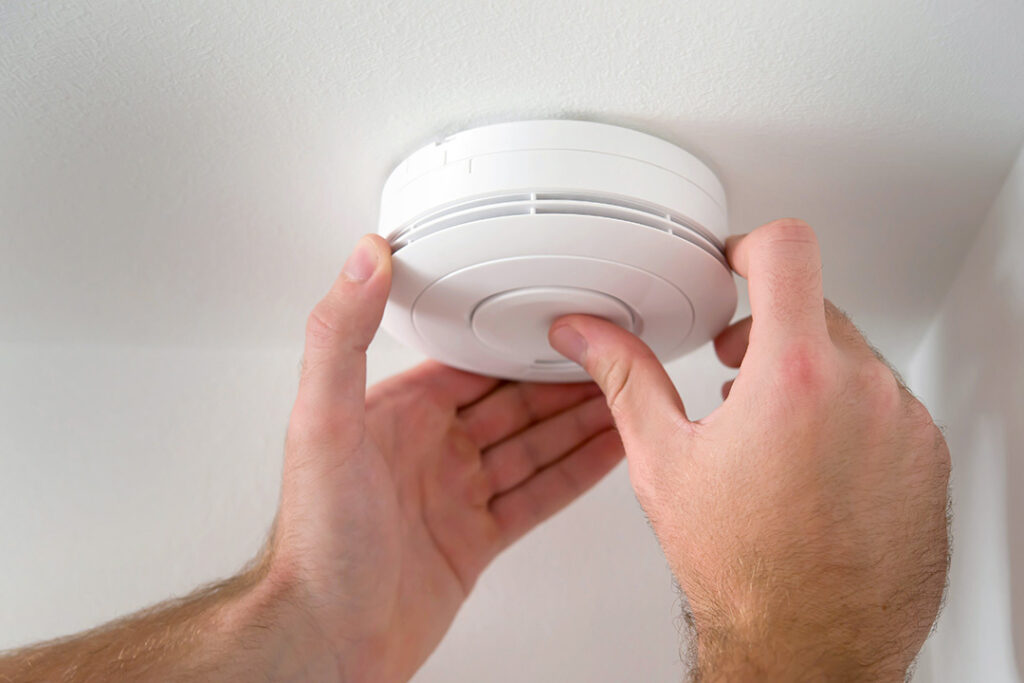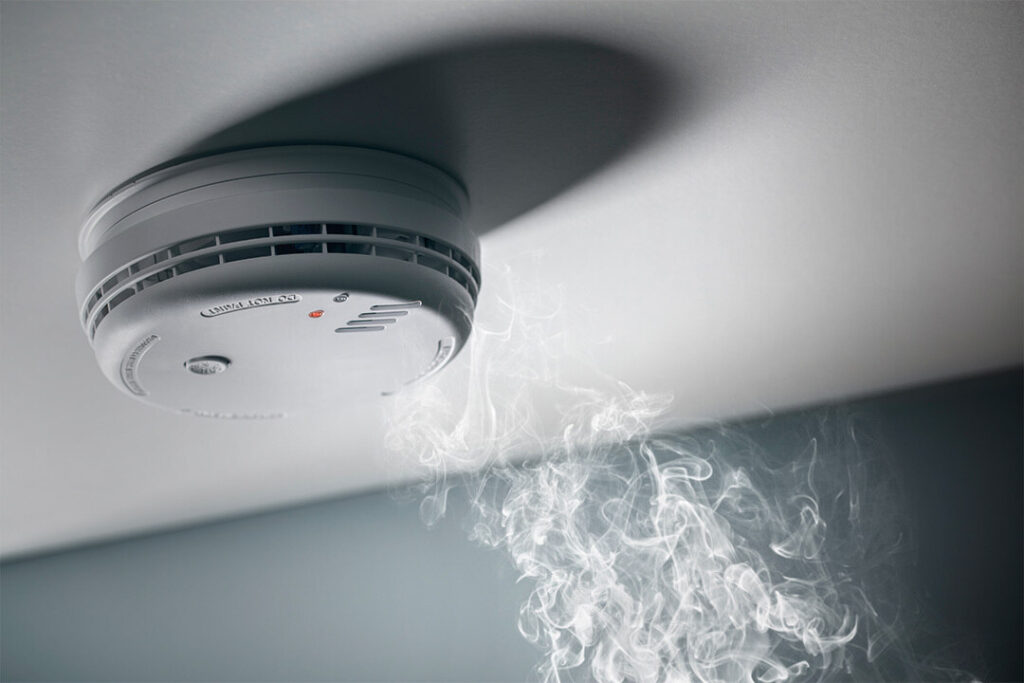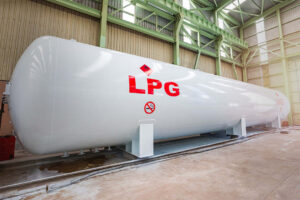Table of Contents
Carbon monoxide exposure is a health risk that isn’t given enough attention. CO is the most common poisoning that happens by mistake in homes. Being exposed to it can have serious effects on the heart and brain, and it can even kill you. In BC, 90 people died of carbon monoxide poisoning by mistake between 1998 and 2014, because CO can’t be seen. In buildings, carbon detectors are the only way to tell if it’s there.
The carbon monoxide detectors let people know that carbon monoxide poisoning is possible in the same way that smoke alarms let people know that they could be exposed to smoke quickly from a fire. However, CO detectors are not commonly used in homes like smoke detectors are.
What Carbon Monoxide is and Why You Need a Detector
Carbon Monoxide is a harmful gas that has no colour, smell, or taste. It is made when things burn. Any appliance, vehicle, tool, or other thing that burns fuel has the ability to make dangerous amounts of CO gas.
Commonly used CO-producing items around the house are the following:
- Automobiles
- Charcoal grills
- Fireplaces and woodstoves
- Fuel fired furnaces (non-electric)
- Gas dryers
- Boilers
- Gas water heaters
How Do You Protect Yourself from Carbon Monoxide Poisoning?
There are many things you can do to keep yourself safe from carbon monoxide poisoning:
- Vent gas appliances correctly
- Never use camp stoves or generators inside
- Install a carbon monoxide detector in every room or floor of your house or building.
- Every year, have a professional check your chimney to see if you have a heating system.
- Change your CO detector every three years.
- Make sure your CO detectors are always working by keeping an eye on them and checking them often.
Concentration and Symptoms
The signs that come with a certain level of CO are shown in the table below:
|
Percentage (CO) |
Symptoms and Medical Consequences |
| 10% | No symptoms (Heavy smokers can have as much as 9% CO) |
| 15% | Mild headache |
| 25% | Nausea and serious headache(Fairly quick recovery after treatment with oxygen and/or fresh air) |
| 30% | Symptoms intensify (Potential for long term effects especially in the case of infants, children, the elderly, victims of heart disease, and pregnant women) |
| 45% | Unconsciousness |
| 50%+ | Death |
Best Practices for Carbon Monoxide Detectors
The best way to lower the risks of carbon monoxide in the workplace is to use carbon monoxide monitors. The following are some things to remember:
Test CO detectors regularly
Carbon monoxide detection needs to be serviced and tested on a regular basis to make sure they keep working correctly. As a general rule, they should be checked every month as part of your facility’s continued safety and preventative maintenance.
Change batteries in CO detectors regularly
Battery-powered CO detectors are often used to ensure continued operation in case the power to the building goes out. To ensure they keep working, put new batteries in these devices at least every year. But think about a program that changes the batteries in CO monitors more often, like every six months.
Look for residential ratings
Install CO detectors that carry the NFPA 720 rating for use in residential facilities.
Choose interconnectivity
If possible, install models that provide interconnectivity among all the CO detectors in your facility. This makes the whole building safer by making sure that CO alarms go off in more than one place, warning everyone in it about the danger.

A Carbon Monoxide Detector Can Save Lives
A carbon monoxide alarm detector is essential for preventing family members from potentially dying from carbon monoxide poisoning when it comes to safeguarding their health and well-being. Similar to how a smoke detector would sound an alarm when it detects smoke, these carbon monoxide detection systems can identify the silent killer and will sound an alert if any CO is discovered. The distinction is that while you can detect and smell smoke from a fire, you are unaware when you or a loved one is breathing in lethal amounts of carbon monoxide.
The key benefits of having these detectors fitted in your home include:
Peace of mind
We all worry about the health and safety of our loved ones, which is why many people install smoke alarms and robber alarms. Carbon detectors will give you even more peace of mind by making sure that your family is safe from the risks of breathing in CO.
Protection
As we already said, CO is a very deadly gas that doesn’t have a smell, colour, or taste, so you wouldn’t be able to tell if there is a leak. In other words, people in the house would keep breathing normal air while also taking in this dangerous gas. By putting up a detector, you can keep your family from breathing in dangerous levels of the gas, which could even save their lives.
An early warning sign
When carbon monoxide (CO) is found, carbon monoxide detectors are meant to sound an early warning bell. The aim is to provide you with a warning before dangerous levels of the gas can be breathed in, which means that you are able to act swiftly before you experience any symptoms of CO poisoning. There is a good chance that you will not breathe in poisonous gas without realising it because of this early warning signal.
Accuracy with warnings
People who have a good detector put in their home will be able to keep working even when things like humidity and temperature change. This keeps them from going off when they don’t need to, and they will only respond to carbon monoxide and not to other chemicals or household gases that they might pick up. So, if your monitor goes off, you won’t have to worry that it was just another false alarm, which could cost you a lot of money.
Advice On Choosing and Installation Of CO Detectors
There are a few different things you should think about when picking out a CO detector. You need to make sure that the detectors you buy will not let you down when they are supposed to keep you safe from something that could kill you. You can pick from a number of different kinds of devices. This includes:
Sealed unit CO detectors
The battery in these CO monitors is sealed inside the unit. It will let you know when the battery goes out, and you will need to get a new unit. These are good because they can’t be changed, so you don’t have to worry about someone taking the battery out by accident. Additionally, they may last for ten years or more, so you won’t have to worry about getting a new charger when the old one dies.
Replacement battery carbon monoxide detectors
The second kind of CO monitor is one that uses replacement batteries. When the batteries run out, you just put in a new set of batteries and keep using the same unit. Batteries need to be changed about every two years, but your monitor will let you know when the battery is almost dead. But keep in mind that the pieces only last a certain amount of time, which can be anywhere from five to ten years.
Smart carbon detectors
Since we live in a digital world, it makes sense that there are smart CO detectors available on the market. With these detectors, the alarm will sound if any CO is detected, but you will also receive notification on your smartphone. This is the most costly option of the three. You might want to buy something that lets you know if you are at home, though, if you spend a lot of time away and are worried about your loved ones.
Conclusion
CO poisoning is a silent threat that Carbon monoxide detectors shield people from dying from. These detectors assist in the early detection of this colourless, odourless gas and help stop harm. Appropriate CO detector placement and upkeep are necessary for both monitoring CO levels and preventing carbon monoxide exposure.
FAQ's
The timeframe can vary depending on the workload of your chosen installer and the availability of boilers. However, once your application is approved, you can expect the installation in a few days.
Anyone who has a boiler installed before 2005 or has an inefficient boiler can qualify for a boiler grant in the UK. To meet the requirements, you must be a homeowner or private tenant of the home in the UK.
The ECO4 Scheme is a government-funded program that provides grants and funding to homeowners in Scotland, who want to install energy-saving measures in their homes. The aim of the Eco4 scheme is to help people reduce their energy consumption and save money on their energy bills.
Yes, it’s quite easy. You should regularly check that the evaporator and air intake grill are clear of leaves and other particles.
To be eligible for a first time central heating grant, you must not have prior central heating installed in your homes. Also your home’s EPC rating should be lower than D.




